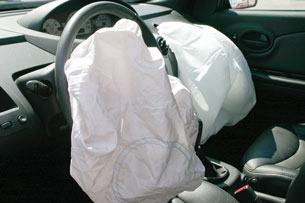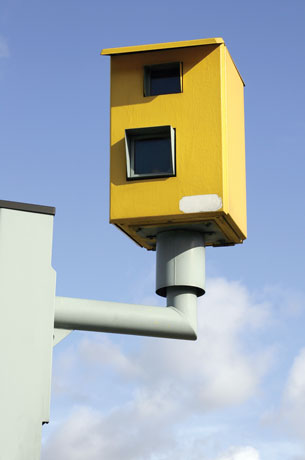Module 3—Effects of Force on Velocity
 Reflect and Connect
Reflect and Connect

© Kim French/shutterstock
How can new and innovative technologies be applied to vehicle and transportation infrastructure in order to reduce injury and death on Canada’s roadways?
Safety devices, such as airbags and seat belts, are designed to reduce injury and save lives in the event of an accident. In an accident, there are often two collisions. The first collision involves the car colliding with another car or object.
The second collision involves an occupant in the vehicle hitting either the windshield or dashboard, or both.
 Try This
Try This
TR 7. Read pages 140 and 141 of your textbook. Then begin “3-4 Decision-Making Analysis: The Airbag Debate” on page 141. Complete “Analysis” questions 1 and 2.
TR 8. Answer either Part A or Part B. You do not have to complete both parts.
Part A: Using Newton’s laws, explain why a second collision always follows the first. Record your answer in your Physics 20 course folder.
Part B: Using Newton’s laws, explain how an airbag and a seat belt minimize the force and acceleration of the second collision that often causes injury and death. Record your answer in your Physics 20 course folder.
 Discuss
Discuss

© Mark William Richardson/shutterstock
In Alberta, red-light cameras may be installed at intersections with high collision rates.
The camera takes a picture of any vehicle that enters the intersection when the light is red. If the picture identifies the vehicle's license plate, a summons or fine is sent to the registered owner.
This “safety” device reduces injury and vehicle damage at controlled intersections, yet its use is controversial. Think of benefits and costs of such a device as you do the following questions.
D 1. Why are intersection-related collisions likely to cause severe injury and death?
D 2. What makes a red-light camera effective at reducing the severity and number of collisions?
D 3. What social and economic implications were considered in deploying such technology?
D 4. What other traffic safety-related applications can this technology be applied to?
 Reflect on the Big Picture
Reflect on the Big Picture
Each of the Reflect on the Big Picture sections in this module will ask you to consider the movement of people or goods. Complete one or both of the following activities:
- Prepare a short speech (e.g., one or two minutes) on how Newton’s first two laws explain why the people, the vehicle, and the broken parts move as they do when a vehicle hits an immovable object. You can present your speech in written, audio, podcast, or video form.
- Create a drawing, painting, or multimedia presentation involving moving people or goods that summarizes Newton’s first two laws.
Store your completed reflection in your Physics 20 course folder.
 Module 3: Lesson 1 Assignment
Module 3: Lesson 1 Assignment
Remember to submit the Module 3: Lesson 1 Assignment to your teacher.